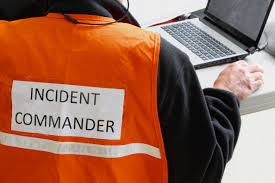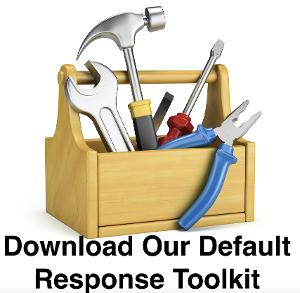Woah, that’s a new term. Let’s start at the beginning:
The Incident Command System is a program developed to manage emergencies and most importantly, communication, actions and order/direction during emergencies. When FEMA and Department of Homeland Security think about “Incidents”, they’re thinking big picture and little picture (if I can use that expression?). They think about governmental response to large scale emergencies like earthquakes, forest fires and hurricanes and they also think about single community responses to smaller scale or more isolated emergencies.
To help support both ends of that spectrum, they developed a nationally recognized protocol for managing emergencies called the Incident Command System.
To help schools adapt the core principles, we’ve created this chart which guides you to a more logical flow of information and a better outcome.
The catch with the Incident Command System is that you always need to have an Incident Commander. Again, recognizing the uniqueness of schools (especially private and charter schools), we have some thoughts…

-
Who’s your normal incident commander?
-
Often times, there’s an assumption that a Head of School or Executive Director will play the role of Incident Commander. Be realistic though, for a moment and you may find that that doesn’t work. How many Heads of School are interviewed during the selection process and asked “how do you fare in a lockdown?”. I don’t necessarily have the data to back this up, but I might say none. The fact of the matter is Heads of School are selected because they’re brilliant leaders, educators, fundraisers, motivators - whatever the school may need in that period of time, but they’re not selected because they’re good at emergencies. Might your head be phenomenal in an emergency? Absolutely! I know plenty that are! But conversely, might your Head freak out at the sight of blood and absolutely lose their cool when there’s an earthquake? Absolutely! I know plenty that do! My challenge to you is this: Determine the best incident commander for your community based on their ability to make decisions in a challenging environment and maintain some form of composure in spite of all of the mayhem that might be going on around them.
-
-
Once you’ve selected your incident commander, pick their backups!
-
So, as it turns out, people go home at night, get sick, go to lunch, etc. Once you’ve selected a great incident commander, the next step is to identify a person to back them up, and then to back them up. A general rule of thumb is that you should have at least 1 incident commander per 100 people in your on campus community. I.e. If you have 500 people in your on campus community (students and staff/faculty), then you should have at least 5 Incident Commanders to pick from. In a perfect world, everyone would have 7+.
-
-
Clear, concise, pre-planned succession:
-
Once you have selected your incident commanders and know who will back them up, then it’s time to document who will take lead and in what order. If your Head, for example, is your incident commander and they’re off campus, is it your CFO, Middle School Director, Facilities Manager, or your board chair who takes over? It’s important that this is well documented, well communicated and well rehearsed. I’d love to say that I haven’t seen this turn into serious career ending fights, but… I can’t. Think about it in advance and ensure everyone knows and understands where they fall in the succession list.
-
So how do we make this actionable?
-
Take this org chart template and rebuild it for your community. On the top right corner, add in all of the people who you want to be your incident commanders.
-
Then, conduct a series of tabletop exercises or drills where each person designed to be the incident commander has to take leadership and be the Incident Commander. You’ll find out if you made the right choices fairly quickly…
If you'd like more resources regarding school safety, follow the button below to download one of our free tools that will immediately improve your emergency preparedness.
Or, subscribe to our blog below so you never miss a useful post!


